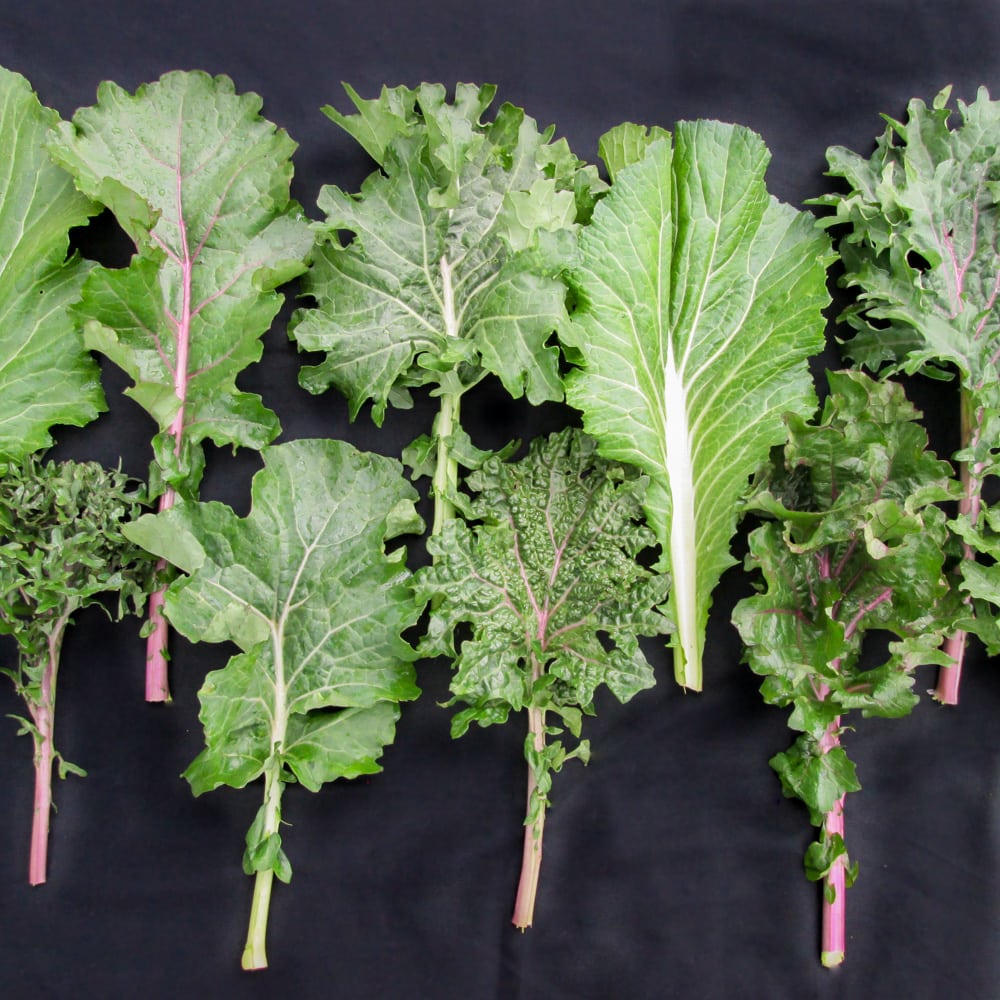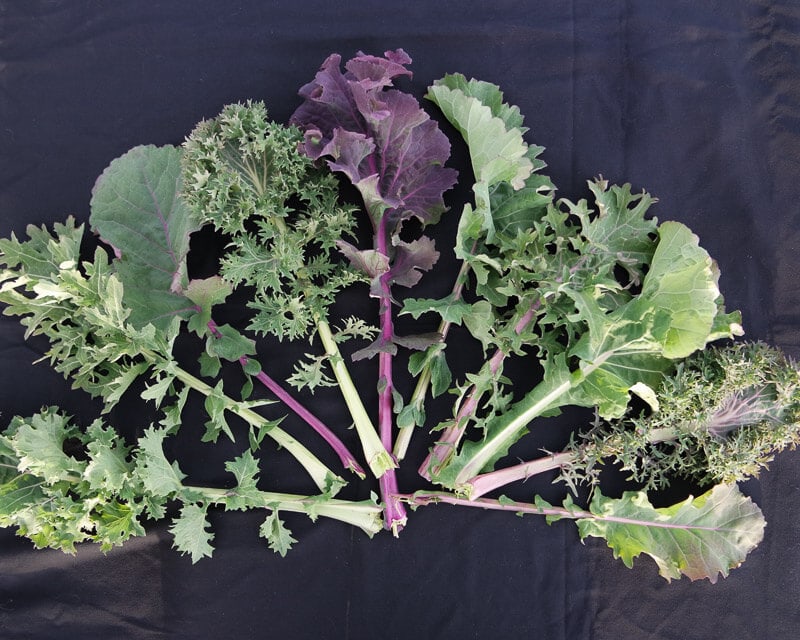Kale, Gulag Stars (Organic)
Brassica napus with Brassica rapa crosses. 25 days baby, 50-60 days full.
Incredible diversity unlike anything else. A mix of napus kales that have been crossed with B. rapa. Napus leaf types vary through the color spectrum from brilliant red to green to white Russian types; from super frilly to broad-leafed shapes; from skinny, short stems to broad, thick stems; and multiple combinations thereof. Occasional rapa leaf types vary from turnip-leaf to something that looks like a cross between pak choi and napa cabbage, though we have been selecting away from these rapa variations. Originally bud pollinated by Tim Peters in Oregon to bypass species incompatibility mechanisms. Interestingly, individual plants seem to self-pollinate well making selection of new varieties from the mix easier. We have selected new varieties of kale out of this crazy population in collaboration with Lane Selman and chef Tim Wastell of the Culinary Breeding Network. North Star Polaris and Simone Broadleaf were developed through this collaboration and both have been released as Open Source Seed Initiative pledged varieties.
Seed produced by Wayward Acres in the Applegate Valley of Oregon.
As required by the Oregon Department of Agriculture and the Washington Crucifer Quarantine, all Brassica family seed lots have been tested and found negative for blackleg (Phoma lingam) by an approved, certified lab.
| Geographical Origin |
|---|
Sow indoors with good potting soil February through September. Transplant about 3-4 weeks after sprouting. In our region, kale can grow through the winter without protection, and survives best when sown in June or early July for this purpose. Alternatively, direct sow March through September.
Seed Saving
To maintain genetic diversity and prevent inbreeding, collect seeds from 10 or more plants of B. napus varieties, or 30 or more plants of B. oleracea. Cut seed heads when pods are dry, place on tarp, thresh by hand or by dancing. Winnow and screen to clean. Isolate from other Brassicas of the same species by ½ mile.





What others are saying
There are no contributions yet.